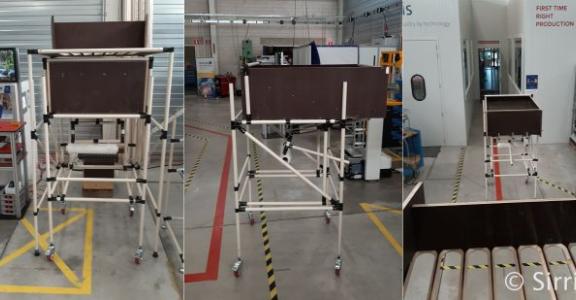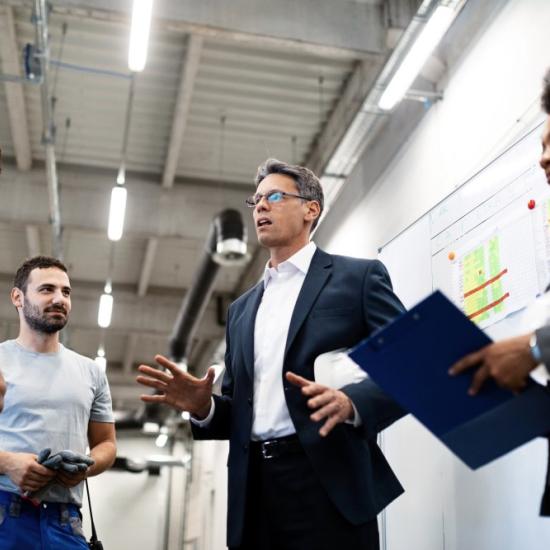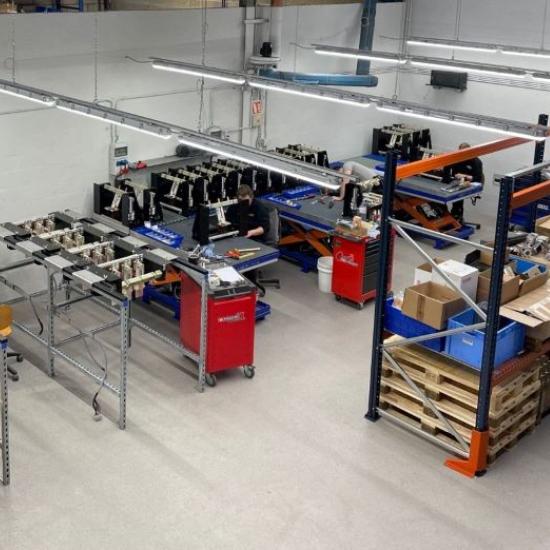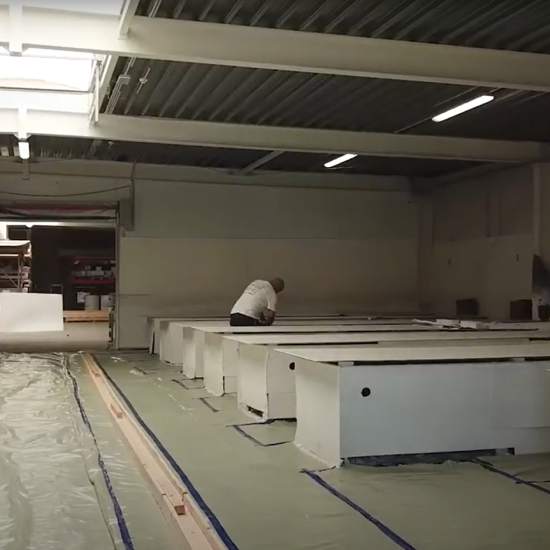Altachem is a manufacturing company experiencing continuous growth. In order to scale up further, Altachem wants to install additional production lines and find the logistics concept that would be best suited to this.
Altachem, located in Harelbeke, is a world leader in the development and manufacture of aerosol valves and foam applicators. Altachem employs twenty people and is part of the Lindal group. Altachem is considered to be an innovative trendsetter within this group. This means that the company is often the first in the group to explore new technologies and perform test cases. When successful, these are rolled out - where appropriate - across the group.
To scale up further, Altachem wants to install additional production lines on the existing production floor. The production lines at Altachem are high throughput lines. However, the current working method does not allow for smooth upscaling for a number of reasons: first of all, there is a shortage of free space because the production floor is full of all kinds of materials such as pallets, goods-in-process (WIP) and boxes. Various manual interventions are also required, such as loading the components into the machine bunkers, picking up boxes with a manipulator, opening, emptying, etc. Finally, dedicated tools (lifting equipment) are needed to manipulate the boxes and other goods. Altachem wants to avoid having to invest in these dedicated tools for every new production line.
Evaluating the logistics concept
Being an innovative company, Altachem began an exercise six months ago, with the support of Sirris, to find the logistic concept best suited for expanding production. Evaluating the technological and economic feasibility of using automated guided vehicles (AVGs) to automate the movement of materials in the valve assembly production cell formed an important part of this study. The idea behind this was to remove goods-in-process (WIP) from the work floor as far as possible and centralise them in a dedicated zone from where the right material can be taken to the right place at the right time via an AGV. This would free up space on the workfloor, relieve operators of logistical tasks and avoid the duplication of dedicated tools for each new production line.
After a thorough study of the existing situation, an initial logistics concept (production logistics) was devised, based on the following principles: a dedicated preparation zone separate from the production floor, a special carrier mounted on an AGV for taking components to the machines and emptying its contents into the bunker of the machine without manual intervention.
A test set-up in the application laboratory
This initial concept was then iteratively evaluated in Sirris' application lab. A prototype of the custom carrier was built and several methods for emptying it were tested. A tipper method, as used in agriculture, was chosen as the best solution. The volume of the carrier can be adjusted to increase the autonomy of the AGV. This carrier is mounted on a pipe-and-joint structure that is, in turn, carried by the AGV. By using a simple but ingenious Karakuri mechanism, the carrier can be emptied into the bunker without the intervention of an operator.
A prototype was also built for the preparation zone. To avoid having to adapt the existing machine bunkers, the carrier must be filled with components at a height of 1.5 meters as this is the height of the carrier when mounted on the AGV. Since this is not an ergonomic working height, it was decided to install the prep-zone on a platform. Using a vacuum lift system, the operator can then ergonomically place the boxes on the work table and then pour them into the mobile carrier on the AGV. The AGV can then go to the machines to empty the components into the bunker.
An initial estimate was made for the occupancy rate of the AGV and the operator for a scenario in which two machines must be supplied with components. Components are taken to the machine and finished products transported to the ‘outbound-zone'. Although some details still need to be worked out, the results of this study allow Altachem to make a well-informed strategic decision about the next steps in this process. As the standard bearer for innovation within the Lindal group, the company can inspire and motivate the other locations to take similar steps themselves.
Do you want to automate the internal logistics process on your production floor but are unsure about the feasibility? Then don’t hesitate to contact us !
You can read more about internal logistics in the following blog article.
Automating logistics operations helps to support operators in their task. Sirris has a specific testing ground in relation to this theme.






